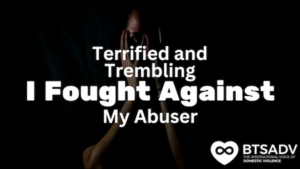What is Teen-Dating Violence?
According to the CDC, 1 in 8 female and 1 in 26 male students in high school have been a victim of some type of teen-dating violence in the last twelve months. This could be physical violence, sexual violence, psychological aggression, or stalking. This is a huge problem, but it can also fly under-the-radar, because of our skewed views on what constitutes abuse, and violence.
Every generation sees dating evolve in different ways. This means that the social norms of a parent’s generation are rarely the same by the time their child is preparing to date. Technology has put those changing generational norms on steroids. Teenagers today are dealing with social media; which allows for a greater level of social pressure and more access for someone looking to stalk a fellow teen.
So many parents have been molded by the media to misjudge the real threat. For example, the National Institute of Justice states that, “About 85 to 90 percent of sexual assaults reported by college women are perpetrated by someone known to the victim; about half occur on a date.”
These numbers are fairly similar throughout the world of abuse. We have been programmed to believe that the rapist, or abuser is going to be waiting in a shadowy alley at 3 a.m. While we can always be vigilant (even though we should expect that all women be able to feel safe, we know that is not always the case), teen-dating violence, and all other forms of abuse are way more likely to come from someone the victim already knows. Most women are actually more likely to be a victim of violence on the dinner-and-movie date, than on the walk home from it.
This is where some parents can tend to miss the clear signs of teen-dating violence, under no fault of their own. They are looking for the stranger who tries to groom, and infiltrate the safe-space created for the child. What is often the more pressing concern is the people we invite into the safe-spaces.
Catching the Signs
Technology is amazing. During the peak of the pandemic lockdown, technology was able to give us some of our only interpersonal interactions. Many teens are social creatures, so this gave them an outlet to communicate with friends, and avoid loneliness in a time of increased anxiety. It has also created communication protocols that are completely foreign to people from older generations.
As mentioned earlier, the CDC lists stalking as one of the key examples of teen-dating violence. They define stalking as, “a pattern of repeated, unwanted attention and contact by a partner that causes fear or concern for one’s own safety or the safety of someone close to the victim.”
It is important to focus on some key terms in that definition. “Unwanted attention” means that it lacks consent. This distinction frames stalking in a way that can be viewed outside the parameters of technology and social media. Younger people tend to communicate a lot. A parent doesn’t want to be the boy who cried wolf when a teenager is engaged in perfectly innocent interactions. Just like Generation X had two-hour phone conversations in the 80s and 90s, teens today have back-and-forth texting for hours. Stalking isn’t the frequency of the interaction; it is the result of that interaction.
“Contact by a partner that causes fear or concern over one’s own safety” is a clear and definitive line of demarcation. As adults, making sure that we let teenagers know that there are safe outlets to look for help when they feel uncomfortable is vital to safety. It also requires trust in the teenager. An adult may hear that phone buzz repeatedly throughout most evenings, and think that it is annoying. It may seem like stalking behavior to an adult, who is far removed from healthy teenage dating. If the teen feels comfortable and safe in that interaction, however, intervening could make that teen more cautious in reaching out for help when it a social relationship does cross a personal boundary.
Trust is the Key
Megan Alpine manages the Teen Outreach Program for Family Service in Roanoke Valley in Virginia. In a recent conversation with WDBJ television in Roanoke, she suggested, “Especially for parents with their teens, to just be checking in and reminding them you are a nonjudgmental person they can turn to and just listen if they want to talk to you.”
The biggest key in preventing teen-dating violence may just be developing a level of trust between parents and teens. Being “nonjudgmental” can be hard. A parent who “never liked him in the first place,” needs to avoid the urge to say, “I told you so.” Any victim of abuse, from young children to seniors, may only reach out for help once. They need to know there will be no judgement.
In a realization that may be very difficult for some people of older generations, they are going to have to establish that trust around issues of sex and sexual activity. This trust is established at a very young age, by allowing children the ability to reject physical contact, even if it hurts an adult’s feelings. It also requires communication that allows teenagers to be open about consensual sexual interactions.
The prime example would be a teen girl who engages in some consensual sexual activity with a boyfriend. At some point, the boyfriend tries to pressure her to do something sexually that exceeds her comfort zone. For that girl to be able to reach out to her parents, she needs to know that she will not be judged for the consensual activity. She needs to be able to establish the lines for herself, and those decisions need to be universally accepted. If she is afraid to tell a parent, teacher, or some other person in a position of power that she did willingly engage in some sexual contact, she will be less likely to talk about actual violence or abuse she has experienced.
Abuse Breeds Abuse
The CDC has created a fantastic booklet, “Preventing Intimate Partner Violence Across the Lifespan: A Technical Package of Programs, Policies, and Practices.” You can find a link to the packet with the other reference links to this blog.
As one would imagine, the booklet explicitly advises that, “Experience with many other forms of violence puts people at risk for perpetrating and experiencing IPV. Children who are exposed to IPV between their parents or caregivers are more likely to perpetrate or experience IPV, as are individuals who experience abuse and neglect as children.”
The absolute best way adults, especially parents, can prevent teen-dating violence is to have healthy relationships with mutual respect. This shows children how healthy relationships are supposed to look, and what to expect from a potential dating partner.
The CDC goes on to stay that, “Recognizing and addressing the interconnections among the different forms of violence will help us better prevent all forms of violence.”
Men who abuse their spouses or partners; parents who abuse their children; and childhood bullies who are allowed to continue to berate vulnerable classmates are all indirectly causing teen-dating violence. These factors are not an excuse for anybody to commit acts of abuse, but it is important for both parties in a dating relationship to understand what does and does not constitute abuse. If something is presented as normal to a child, he will believe that he can act that way towards a potential dating interest. If someone witnesses that kind of treatment towards others as a child, she may not realize that it is abuse when it happens to her.
Dating Matters
The CDC has created a course called “Dating Matters” with the right approach to attacking teen-dating violence. Instead of trying to reach the teens when they are already starting to think about dating, and may already be sexually active, this course is intended for eleven-to-fourteen-year-old kids.
“Dating Matters is an evidence-based teen dating violence prevention model that includes prevention strategies for individuals, peers, families, schools, and neighborhoods. It focuses on teaching 11–14-year-olds healthy relationship skills before they start dating and reducing behaviors that increase the risk for dating violence, like substance abuse and sexual risk-taking.”
You can also find a link to this program to help develop that communication and trust, before it is going to be an issue. Preventative medicine is the real key to physical health, and that is the same thing when trying to foster healthy relationships.
Healthy Relationships
Teenage dating can be an important and formative experience in the life of a person. It is very unlikely that the person you date as a freshman in high school will be your life-long romantic partner, but those experiences can still be incredibly positive. Being aware of teen-dating violence should not be used as a tool to scare parents into locking their kids away from the world. Just like with a lot of things in a teenager’s life, it is just important that everyone is aware of the potential risks. A sixteen-year-old needs to study to learn how to drive. A senior in high school has to do research into a potential career or college. A teenager who is preparing to enter the dating world should also be properly prepared for the experience. That way, it can be the positive, affirming, and exciting experience that every teenager deserves.
Sources used for this blog can be located at the following links:
https://www.wdbj7.com/2022/02/14/recognizing-teen-dating-violence/
https://www.cdc.gov/violenceprevention/intimatepartnerviolence/teendatingviolence/fastfact.html
https://www.cdc.gov/violenceprevention/intimatepartnerviolence/datingmatters/index.html
https://www.cdc.gov/violenceprevention/pdf/ipv-technicalpackages.pdf
https://nij.ojp.gov/topics/articles/most-victims-know-their-attacker









